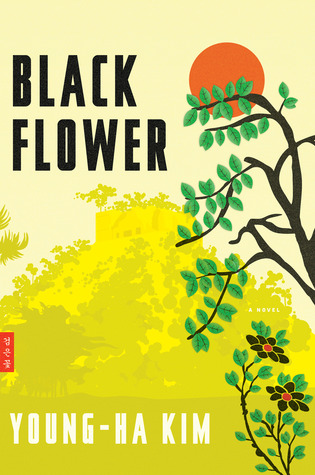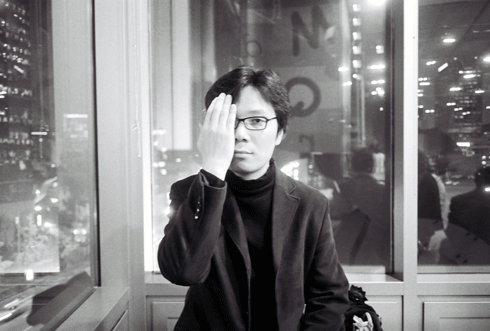Book Review: A Wilted “Black Flower” From Korea
I can see why celebrated Korean writer Young-ha Kim was attracted to this real life story of about a thousand Koreans emigrating from Asia in 1904.
Black Flower by Young-Ha Kim. Translated from the Korean by Charles La Shure. Houghton Mifflin Harcourt, 305 pages, $25.
By Roberta Silman
Young-Ha Kim was born in Korea in 1968 and has made a name for himself as a Korean writer of fiction, probably because his first book had the title I Have The Right to Destroy Myself. According to the publicity material about him, his work is a good example of the trendy “post-modern” movement in fiction; he has become the darling of the Korean literary establishment, and his stories and novels have been critically acclaimed in his native country (Black Flower appeared there in 2004) and optioned for the movies. As proof of his promise, he is also here on a fellowship for this academic semester at our own Columbia University in New York.
I wish I could join the chorus of praise, but I must admit that I found this American edition of Black Flower unbelievably tedious. I don’t know if it’s the translation by Charles La Shure, but the shapes of the sentences are more like what’s found in a business manual (one website reported that Kim had started as a business writer) rather than the sort of prose we prize in fiction. Worse, there is no one to root for; although this book has been billed as a story of star-crossed love between poor Ijeong and the noble princess, Yeonsu, it is packed with so much history and tangential side tales that it is hard to get the thrust of the narrative.
Yet I can see why Kim was attracted to this story of about a thousand Koreans emigrating from Asia in 1904. The Korean empire had been annexed by Japan, which was in the midst of the Russo-Japanese War, and these people wanted freedom and the possibility of a new life. So, knowing nothing about their destination, they boarded the ship, Ilford, and endured a grueling journey halfway around the world to Mexico. Their ship’s journey could have filled a novel because of the number and variety of characters Kim introduces, and there are scenes that have some merit, although they are, as one editor I knew used to say, “not unfamiliar.” There are many scenes of filth and lack of privacy and an older man forcing himself on the young Ijeong, as well as the squabbling and envy that come when so many people are forced into steerage. And characters with complicated back stories who see this as an opportunity to change their lives are also on board. But very little of it hangs together enough in a compelling way.
Once they arrive in Mexico, things only get worse. Instead of the opportunities they hoped for, these immigrants are forced into slavery on the henequen haciendas and are then scattered hither and yon. Ijeong and Yeonsu are separated, but instead of sticking to the fates of those two, Kim introduces even more characters and interrupts the narrative to give us bits of Mexican history, stories of Mayan shamans and Indian legends. While some of this has some relevance for his story, Kim doesn’t seem to know how to weave it into the narrative effectively enough to create enough story-telling push.
He may have felt it important to include all this material as preparation for the turmoil of the Mexican Revolution, which occurs while the Koreans are trying to figure out how to deal with the cruel hacendados (who run the farms on which they are forced to work and who constantly cheat and lie to them). But it doesn’t come together, and when the revolution arrives, it is presented via one cliche after another. Here is Kim telling us about a coup that predated the victory of Pancho Villa:
Huerta’s lightning coup ended its first act with the execution by firing squad of President Madero . . . the tiger was on the rampage, and there didn’t seem to be anyone who could tame it.
The next chapter begins:
The flame of revolution continued to burn. Venustiano Carranza, the governor of Coahuila, drove out Huerta, and the bandit-turned-revolutionary-leader Pancho Villa won a series of victories over the federal troops and was becoming something of a legend. The thirty-year-old Emiliano Zapata was also using guerilla warfare to harass Mexico City and trip up the federal troops. Alvaro Obregon, who would later turn the tide of the revolution and become president himself, led his Mayo Indian troops to victory after victory as well. . .
This is lazy writing in any language, and just piling up details or creating adjectives with dashes does not make for “epic fiction.”
Another reason this book doesn’t soar has to do with its design and layout. Since there is not much dialogue, there are pages and pages of narrative, with the identations for the paragraphs only a few spaces. Thus the reader feels daunted every step of the way. It also occurs to me that some of the historical material, like the part that begins with the sentence, “In 1521, the Spanish soldier Cortes led his six hundred troops to lay siege to and capture the capital of the Aztecs” could have been rendered in italics to give the reader some relief. So I must confess that by the time the immigrants who have survived flee with Ijeong to Guatemala where they found a New Korea among the ruins of the Mayan Indians, I was too exhausted to care.
But I must caution that this not very successful novel may not be typical of the author’s work. And it may be worth it for us, as readers, to find other fiction he has done, for this may be the result of his falling in love with a difficult story that needed thinning and pruning and perhaps more time to think it through. Meantime, one can only admire Kim’s ambition and hope that this young writer will go on to chronicle his people’s stories in a more effective and artful way.
Roberta Silman is the author of Blood Relations, a story collection; three novels, Boundaries, The Dream Dredger, and Beginning the World Again; and a children’s book, Somebody Else’s Child. She writes regularly for The Arts Fuse and can be reached at rsilman@verizon.net.


